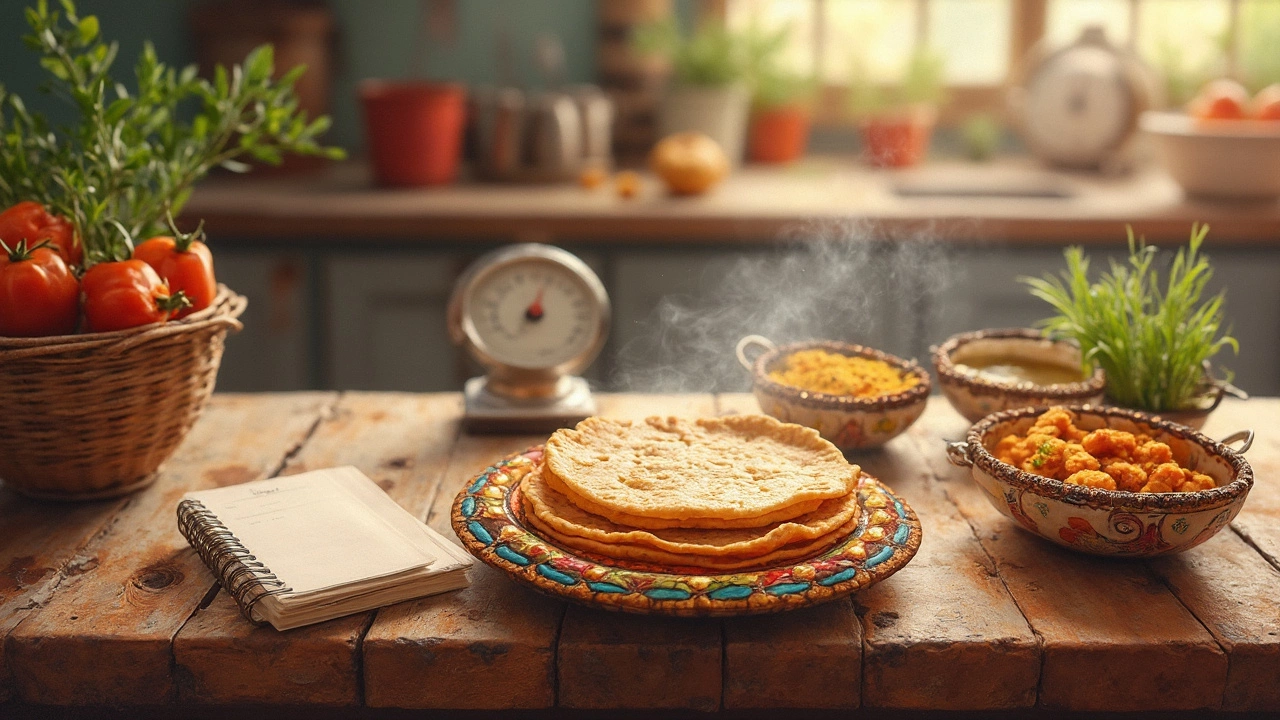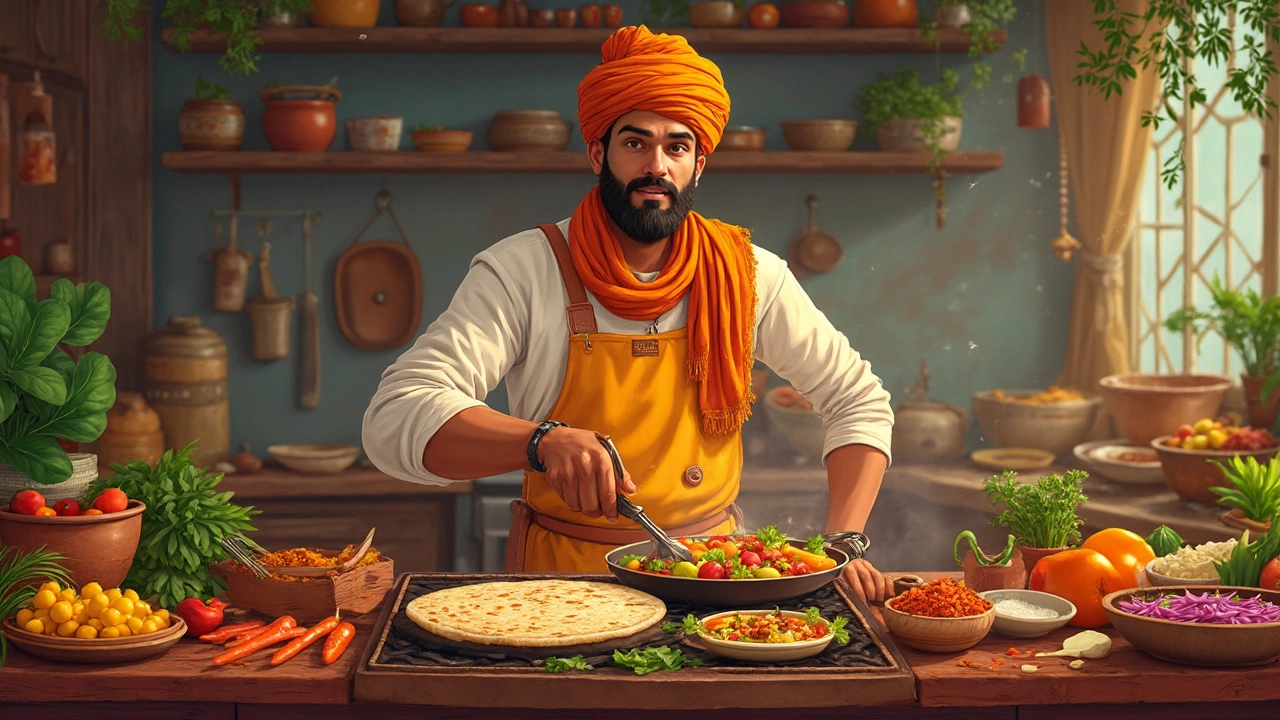Calorie Counting for Indian Food Lovers
When working with calorie counting, the practice of tracking energy intake to manage weight and health. Also known as energy monitoring, it helps you stay aware of what you eat without giving up flavor.
Understanding nutrition, the mix of proteins, carbs, fats, vitamins and minerals in food is the next step. If you know the nutrient profile of a dish, you can estimate its calorie load and make smarter swaps. For example, swapping a heavy cream base for low‑fat yogurt in a korma can cut dozens of calories while keeping the creaminess.
One big player in Indian meals is sugar, the sweet component that spikes calories and can affect blood sugar. Whether it’s the jaggery in a sweet chutney or the hidden sugar in store‑bought sauces, keeping an eye on sugar helps you stay within your daily limit. Simple tricks like using pomegranate seeds for natural sweetness or reducing added jaggery in a dal can make a huge difference.
Including healthy fruit, fruits high in fiber, vitamins and low in added sugars is another easy win. A side of fresh mango slices after a spicy biryani not only satisfies cravings but also adds antioxidants that support digestion. Choose fruits like guava, papaya, or berries to keep the calorie count low while boosting nutrient intake.
Why Calorie Counting Matters for Indian Food Lovers
Indian cuisine is famous for bold spices, rich gravies and comforting carbs. That richness can hide a lot of calories, especially in dishes like butter chicken, paneer tikka, or deep‑fried snacks. By applying calorie counting, you get a clear picture of where those calories come from – be it the oil used for tempering, the ghee in biryani, or the cream in a curry. This insight lets you keep the taste you love while trimming excess energy.
Take dal, a staple across the subcontinent. A cup of cooked lentils provides about 230 calories, mainly from protein and complex carbs, making it a solid base for a balanced meal. Pair it with a small portion of brown rice and a side of roasted vegetables, and you have a plate that’s satisfying, nutrient‑dense, and within a typical 500‑calorie target for lunch.
Even iconic street foods can fit a calorie‑aware plan. A single samosa might push you past 200 calories, but choosing a baked version or limiting the filling to veggies cuts that down dramatically. Knowing the calorie breakdown helps you decide how many items fit into your daily budget without feeling deprived.
Another common misconception is that all Indian sweets are off‑limits. By counting calories, you can enjoy a modest serving of kheer or gulab jamun as part of a balanced day, especially if you offset it with lower‑calorie meals earlier. The key is awareness, not avoidance.
Calorie counting also supports specific health goals. If you’re aiming to lower cholesterol, tracking the amount of ghee or oil in recipes helps you choose heart‑healthy alternatives like mustard oil or extra‑virgin olive oil. If weight loss is your focus, you can spotlight high‑fiber dishes such as mixed vegetable sambar, which fill you up with fewer calories.
All this data becomes actionable when you combine it with simple tools – a phone app, a notebook, or a kitchen scale. Record the portions you cook, note the main ingredients, and let the numbers guide your next grocery trip. Over time you’ll spot patterns: maybe you use more oil than needed in rotis, or you add extra butter to paneer dishes. Adjusting those habits leads to noticeable calorie cuts.
In short, calorie counting isn’t about turning Indian cooking into a math problem. It’s about giving you the confidence to enjoy the flavors you love while staying in control of your health goals. Below you’ll find a curated list of articles that dive deeper into specific dishes, ingredient swaps, and nutrition facts – all aimed at helping you master calorie counting without sacrificing taste.

how many calories are in an apple?
Apples are a popular fruit known for their nutritional benefits, but how many calories does an apple actually contain? This article explores the calorie content in apples, offering insights into their nutritional value and providing tips for incorporating them into a healthy diet. From different varieties to their effect on weight management, discover why apples are a smart choice for healthy living.

How Much Calories in 1 Roti? Fit It Into Your Diet Smartly
Counting calories but can't give up on rotis? Find out how many calories are in 1 roti, with or without ghee or sabzi, and learn how to integrate them healthily into your diet. Unlock the secrets of balancing taste and health. This guide provides easy, practical tips for those who love their daily rotis but want to maintain a healthy lifestyle.

Roti Calorie Guide: Essential Tips for Your Diet Planning
Discover the significance of calories in 1 roti and how it fits into your diet plan. Learn practical tips to balance calorie intake with your nutritional needs, while understanding the impact of roti variations like sabzi pairing or ghee topping. This informative guide aims to empower you with engaging solutions for maintaining a healthy lifestyle.